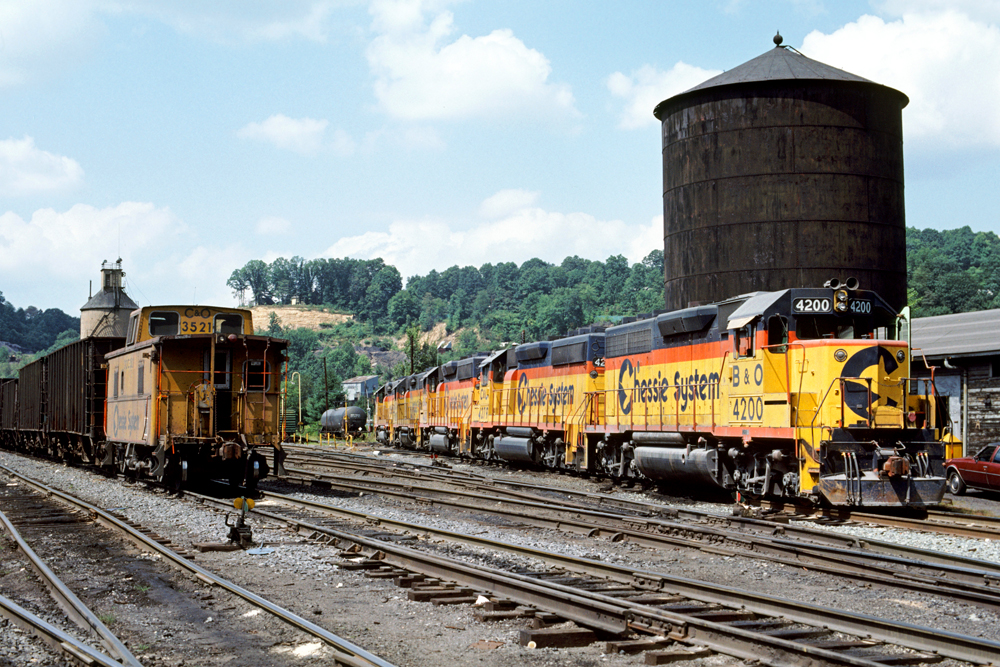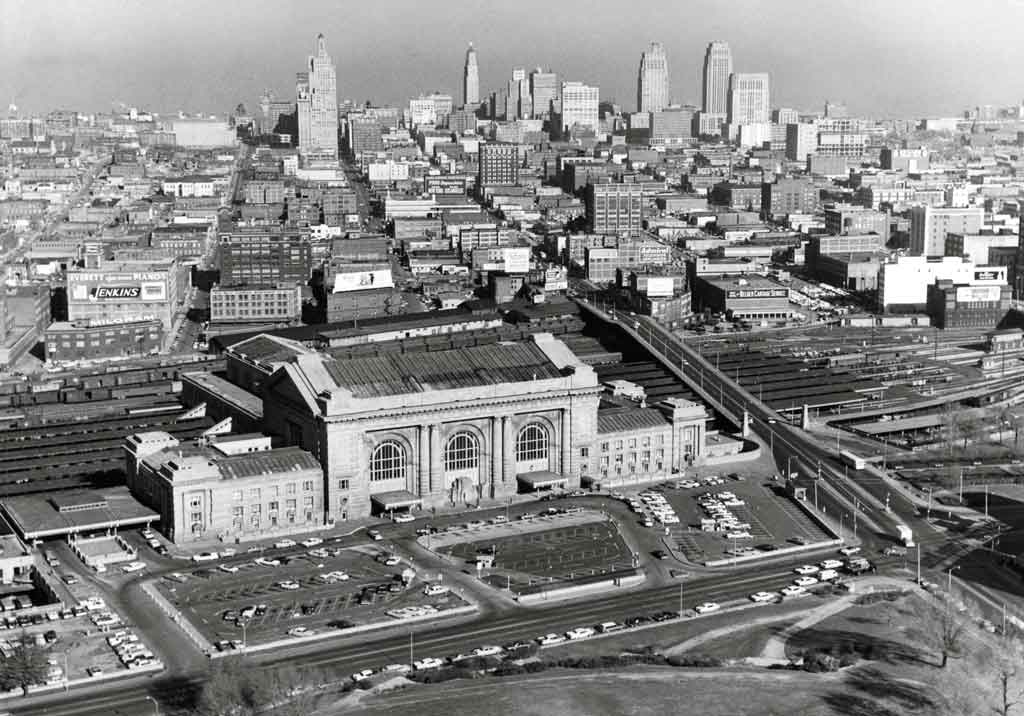
Last fall, Editor Jim Wrinn posed a few questions to retired CSX Chairman Hays Watkins. Living in retirement in Virginia, Watkins answered by email. Here’s what he wrote us about his own experiences, Amtrak, precision scheduled railroading, and other issues of the day. The text has been lightly edited for style or clarity.
What’s the best advice you ever got as a railroader?
A: In my first year with [Chesapeake & Ohio], I worked on the company’s investment in the New York Central. After that fizzled, and I was discouraged, my boss Carleton Meyer, told me: “Just do your best job at whatever you are doing, and don’t even worry about what is next. It will take care of itself.”
What do you think is the best business opportunity in 2020 that railroads haven’t pursued?
A: As for the best opportunity, I still think efficient piggyback service to take loads off the trucks has the best potential. But we have to think like truckers, not railroaders!
What would you do if you were running Amtrak?
A: Since Amtrak is a public service, not a profit center, I would confront Congress with a put-money-up-front option, or start taking off trains. Congressmen cannot have it both ways — pay or lose it.
What advice would you give to railroad management in 2020?
A: I am encouraged by the new idea of going to a scheduled system. We made a few feeble attempts years ago, but could not change enough minds to make it practical.
If you were going to streamline operations at any one location on CSX, where would you start?
A: As for streamlining operations, Chicago has been, and continues to be, the best place to start. Railroads are beginning to understand the need for major changes, but must find the necessary funds to make any major impact!
Do you feel railroads could/should have done more to cut costs and improve margins in the years before PSR really gripped the country? Have railroads taken it too far today?
A: Yes, railroads could have done more in the past, but are now on the right track. Too much emphasis on stock price in the past.
What was your favorite portion of the CSX system to visit?
A: My favorite part of CSX is still the race track east from Chicago. Rails have major advantages on straight tracks, and should use them to the max!
In hindsight, was the 1980s single-tracking of the former Baltimore & Ohio in Ohio and Indiana a mistake, or necessary at the time to see the company through the next decade until the Conrail acquisition?
A: When we single-tracked the B&O in the 1980s, it was a necessity to cut maintenance costs where practical. With passenger service no longer needed on most routes, double track was a luxury we could not afford. After Conrail was split, it was a different story.
What was your favorite trip on the executive train?
A: I always enjoyed going out on the semi-annual inspection trains, and meeting the people who did the work. We would try to have some for dinner on the office car most nights. That was the best use of an office car, but for travel, the airplane was the way to go.
Could/should railroads have done more to promote industrial development (and thus rail traffic) in areas undergoing economic transition such as Michigan or West Virginia?
A: As for industrial development, we always tried to attract plants, working with state and local officials. You can only go so far unless you can find the right candidates! We tried!














BNSF IM trains don’t have to thread the Chicago spaghetti bowl. BNSF (formerly ATSF) and NS (formerly N&W/Wabash) share trackage between KC and Carrollton, MO. There the line splits; BNSF for Chicago and NS for Fort Wayne. Speculation – BNSF doesn’t want to short-haul itself by turning over East Coast IM traffic to the NS at KC instead of Chicago, where most of the BNSF IM traffic is going. How you split the revenue is usually the sticking point in trying to establish runthroughs.
Give Hays the benefit of the doubt. He tried to get the CS BOD to buy E-L for $1 (yes $1) but as they feared the labor agreements CS lost out on becoming BN’s eastern IM connection to the New Jersey ports with virtually zero need for tunnel rework for the eventual high and wide stacks. OTOH IMHO “single track mainline” is right there with military intelligence, honest politicians. Let no one forget during Snow’s leadership CSX was severely criticized by FRA for lousy track maintenance. He is correct that Chicago is a horrendous bottleneck. First we should look at how the mega mergers rather than actually increasing net carloadings, mostly reduced total trackage accessing Chicago. (take five garden hoses and put them into a manifold, then try to get the full volume out on a single hose) Beyond that, apparently transfer runs are slower than they were with first generation diesels. Does anyone believe that moving the interlocking controls to JAX, Omaha, Ft Worth improves communication and speeds up train movement? I remember sitting waiting several minutes at a junction of the CB&Q and IC because the switches were operated from Aurora–some hundred miles away. We were not a surprise–we had been visible on the CTC board for a couple of hours approaching this junction; yet we had to come to a full stop and radio (?–maybe lineside phone) to get our lineup.
The “we need money (from the taxpayers)” routine gets old as exec bonuses swell and actual T&E crews are furloughed.
Decades ago, NYC and Santa Fe exchanged freight via a bypass route entirely missing Chicago. Apparently the current BNSF to either CSX or NS (for the similar Jersey Coast destinations) must thread through the Chicago spaghetti bowl. Why?
Finally, as long as IM is half the net speed of over the road trucking, growing that market will be difficult.
I think that the tremendous volume of coal over recent decades has caused a change in RR management. As long as poorly scheduled, unreliable delivery of impervious to rough handling coal hauling was a backbone, the managers who oversaw those trains advanced within the company because they were successful in retaining a business which had no viable truck or plane options.
Enjoy your retirement, Mr. Watkins.
It’s interesting that Watkins worked on the C&O’s investment in the NYC. In the late 1940s, Robert Young, C&O’ chairman, had the the company purchase an interest in the NYC. Young thought the two roads would be good merger partners. He departed C&O and, after a bitter proxy fight, became Chairman of the NYC in 1954. With Young gone, C&O wasn’t interested in risking its financial resources to revive the “bankrupt but didn’t know it” Central. Fast forward to the breakup of Conrail, CSX gets much of the railroad that it once spurned. An interesting turn of events.
It gives one pause to realize Hay Watkins is perhaps the last of the notable railroad presidents, such as Lou Menk, John Reed, Ben Biaggini, Downing Jenks, Graham Claytor, John Fishwick, and Stanley Crane, who laid the foundation for the railroad revival toward the end of the 20th century.